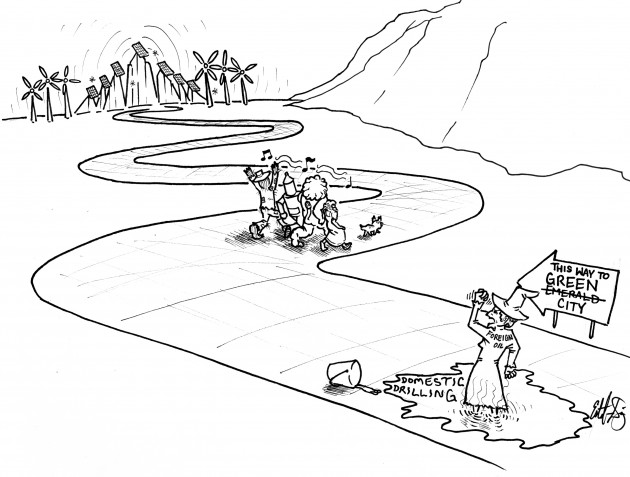
On March 30 President Barack Obama stood before Georgetown University and described his plan regarding America’s energy consumption.
Like countless politicians have stated before, Obama said energy solutions are never derived immediately, and finding ways to balance supply with demand will determine the success of future generations.
But while Obama spoke on points that do need to be addressed, his propositions must prompt action before the speech is given the notorious label of ineffective political rhetoric.
Obama began with his main objective, that America will cut its 11 million imported barrels of oil by one-third in just over a decade. In importing, America should look at neighboring countries as well, he added.
Obama felt that most important, however, will be America’s ingenuity to maintain “a country that is safer, healthier, and more prosperous.” He then announced his administration’s Blueprint for a Secure Energy Future to achieve that goal.

In the short term, Obama said his administration has encouraged offshore oil assuming it adheres to new standards enacted after the unfortunate Gulf Coast oil spill last summer. Since then, the administration has approved several new permits, 39 shallow water and seven deepwater. These are actions in the right direction per Obama’s blueprint and are especially helpful to our local oil-dependent economies in Texas. The work is not finished, though, as Obama said the industry has “tens of millions of acres of leases where it’s not producing a drop.” He spoke of incentives he wants to enact to facilitate production in those areas.
He did not actually outline any of those incentives, which currently leaves the idea in the category of “rhetoric” as opposed to “accomplishment.”
The second part of Obama’s Blueprint for a Secure Energy Future relies on producing alternative energy using various sources both currently available and some needing further research.
Of the readily usable sources, Obama believes natural gas is an option because a century’s worth of reserves are ready to be tapped. Still, that does not provide an answer for future generations. This generation doesn’t have to worry about running out of natural gas any time soon, but if Obama is truly interested in securing America, his plan must include other alternatives.
Those alternatives, Obama said, include ethanol and biofuels like switchgrass, wood chips and biomass. He awaits the groundbreaking of four “next-generation” biorefineries that can make 20 million gallons per year.
Like with oil drilling, he promoted reforming incentives to boost production but did not expound on what those incentives would say.
Obama said nuclear energy is not out of the question with enough pre-emptive studies on plant safety. Nuclear energy reduces carbon dioxide in the air, but it cannot come at the cost of endangering citizens.
Obama placed high importance on reducing America’s overall energy consumption rate. He spoke of a national fuel efficiency standard, alternative fuel vehicles in federal agencies and cutting energy usage with more efficient building materials.
Among all of Congress’s budget cuts, Obama said alternative energy development cannot be one of them, fearing significant losses to jobs and college research opportunities.
Obama’s plan lists viable points as America’s energy consumption shows no sign of slowing. Becoming more self-sufficient with oil and alternative energy will ideally keep prices low for American consumers.
These words have been spoken before, though, and will likely be repeated by Obama and other politicians in the race for public support. Public support will not cut prices at the pump, nor will it find other ways to fuel our homes and vehicles. The Blueprint for a Secure Energy Future is a start; it’s up to future administrations to finish the job.






